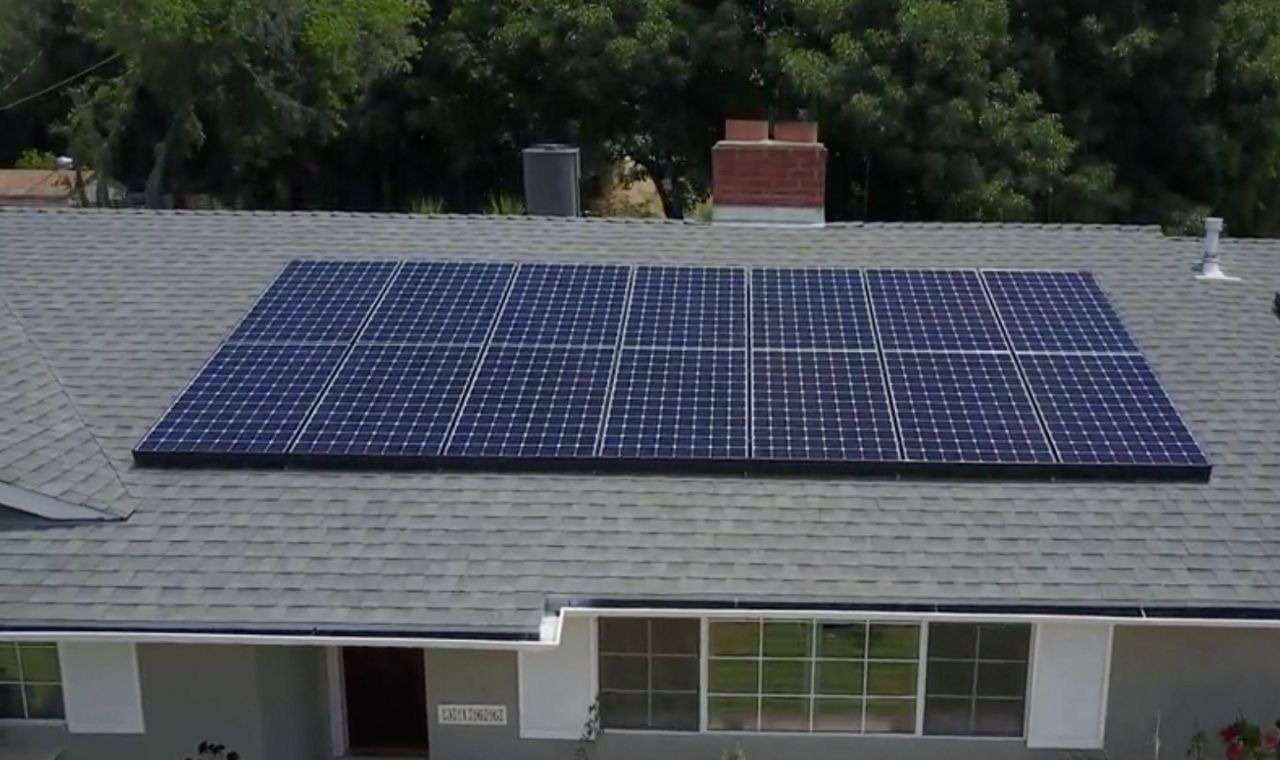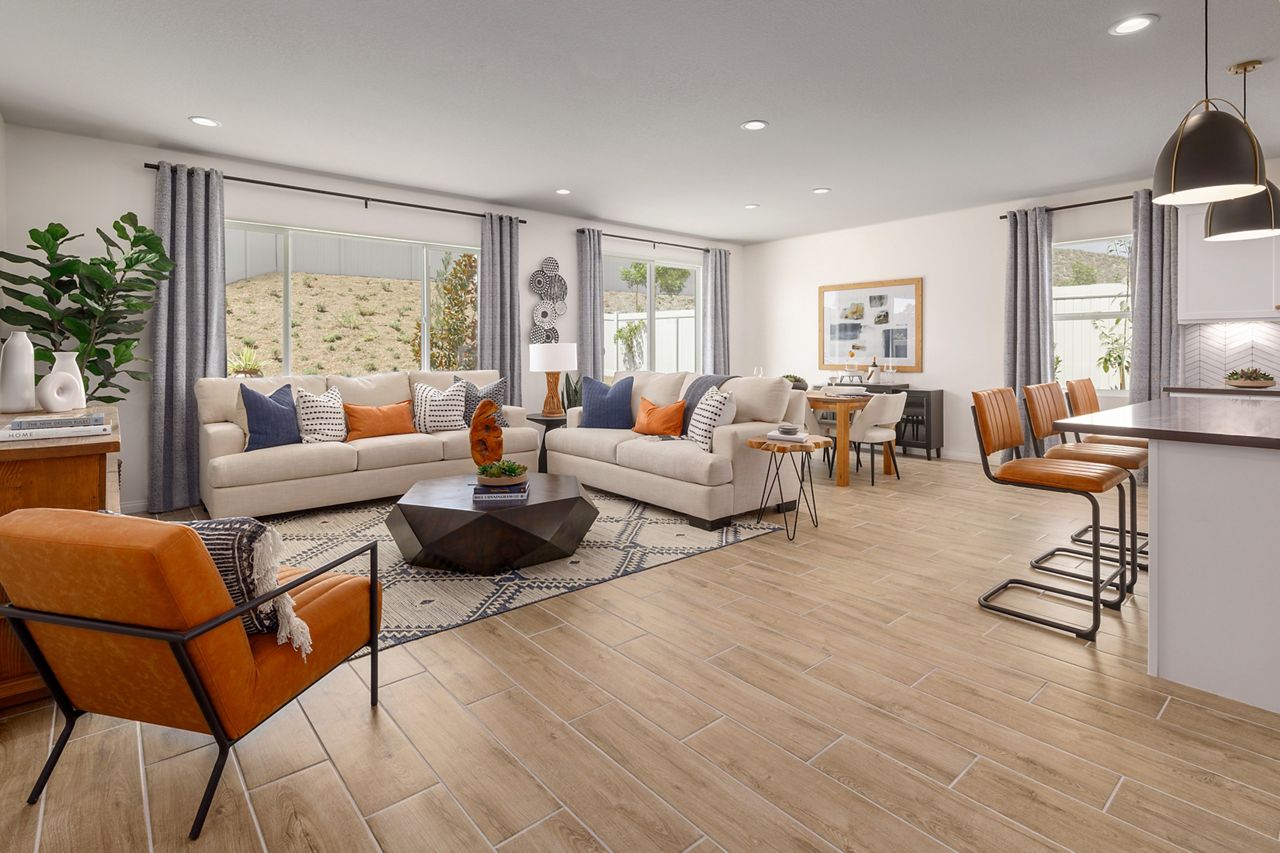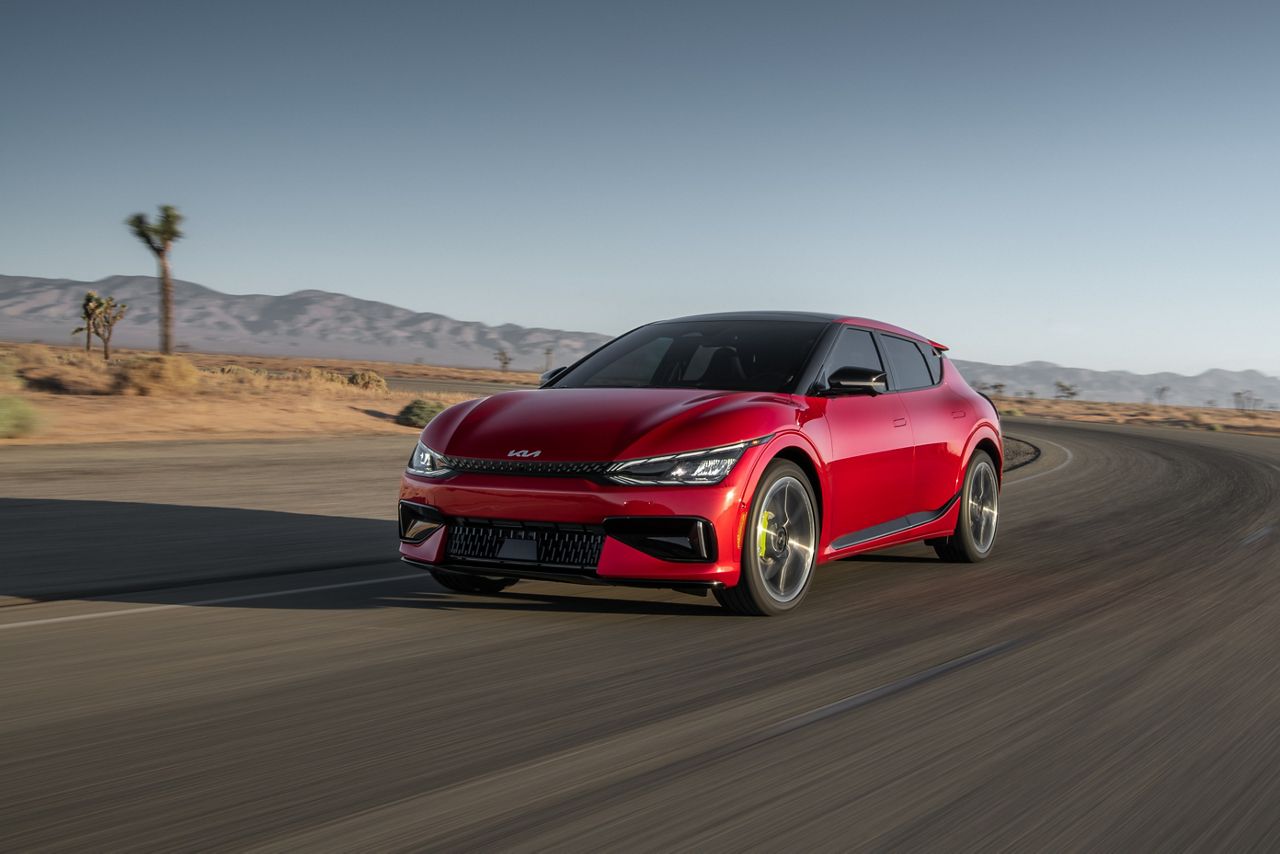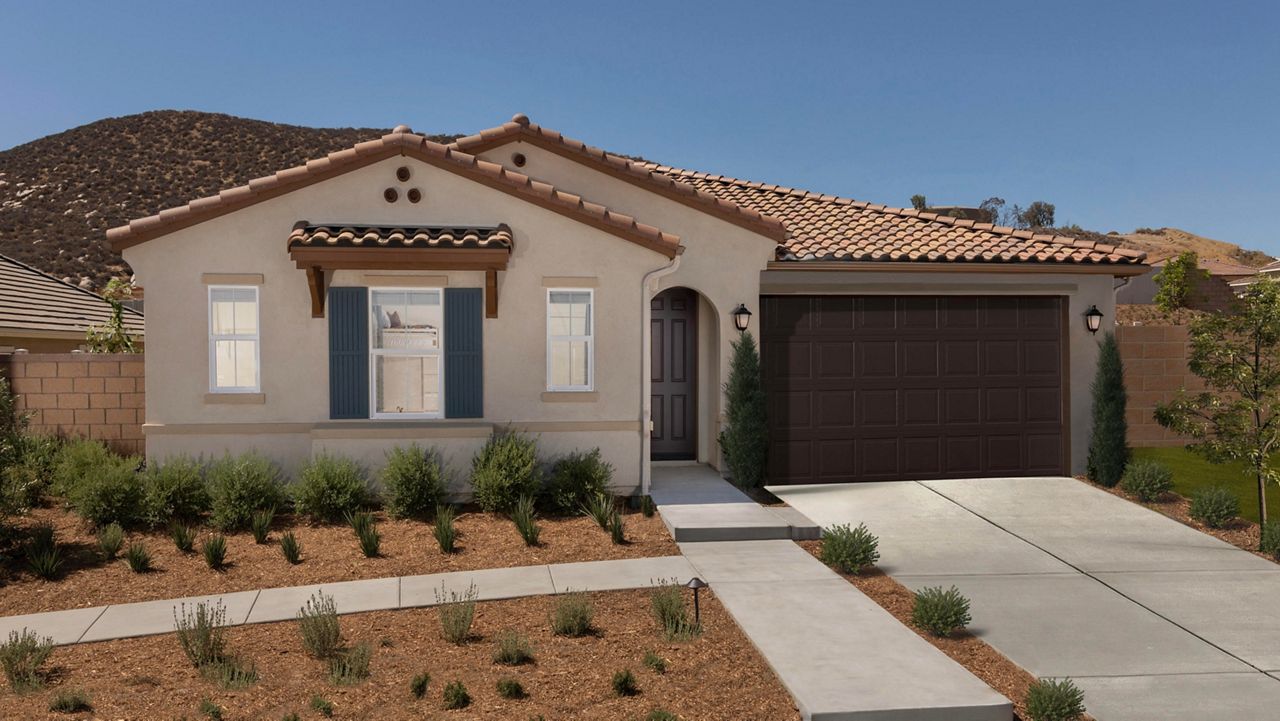MENIFEE, Calif. — With their taupe exteriors and xeriscaping, the model homes on Hopscotch Drive look like thousands of others in the Inland Empire. But get up close, and visitors will see they aren’t mere living quarters. They’re a template for resilient living in a future that’s increasingly defined by climate change.
Topped with solar panels, each home in California’s first all-electric, solar- and battery-powered microgrid home community also has a so-called Sun Vault in the garage to store electricity. And each of those homes is connected, giving them the ability to collectively withstand power shortages induced by extreme heat, wildfires or earthquakes.

Throw in an energy-efficient heat pump that powers the heating, air conditioning and water tank, and gas-free appliances for the kitchen and laundry rooms, and “these homes are, on average, about 40% more efficient overall than your standard home in California,” said Scott Hansen, vice president of forward planning for KB Home.
KB Home partnered with solar provider SunPower last year to apply for a Department of Energy grant on the 219-home development in Menifee, about 65 miles east of Los Angeles. In 2020, the DOE said it would provide up to $65 million to fund new housing projects as part of a connected communities initiative to accelerate renewable energy adoption and grid resilience.

LA-based KB Home and SunPower, headquartered in San Jose, received $6.6 million from the agency to pay for the microgrid’s batteries and research that the University of California-Irvine and the Lawrence Berkeley National Lab will conduct. The car company Kia and the Southern California Edison power utility are also partners in the project.
“How can we get this to work? How does it work? What’s the best way to run it? What’s the best way to operate it? What’s the best way to build it so that we can, in our future communities, take what we learn here and implement it in other places?” Hansen said. “That’s the purpose of the grant.”
The nation’s sixth largest home builder, KB selected the Menifee development because it was large enough to be a good experiment and could also be isolated from the main electricity grid in the event of a power outage or natural disaster, Hansen said.

The homes are available in a variety of floor plans and range in price from $490,000 to $590,000. Each house ranges in size from 1,400 to 2,900 square feet, which determines the scale of its solar array and battery system. Whether a homeowner is able to completely power their space with solar, however, depends on their usage.
Residents who are frugal with their electricity use might not need to pull any power from Southern California Edison, though people who are heavy electronics users most likely will, Hansen said.
“If I asked most people, ‘What do you want in your electricity provider?’ They’d say they want low cost or affordable, reliable energy,” said Matt Brost, vice president of new home sales for SunPower, which is providing the solar panels, battery energy storage, management system and installation for the microgrid homes.
“With this project, we’ve got even lower cost, super reliable energy, but on top of it, you’re getting all these other benefits like resiliency.”

The homes are resilient because the electricity is locally generated with solar panels and stored on site, not only with individual homes’ batteries but a large community battery that can store their excess power. What makes them a microgrid is that all of the homes are connected to each other and pool their power into an energy island that’s able to provide backup power in case of an impending blackout.
Already, a grueling week-long heat wave in September brought the state to the brink of mass blackouts. As climate change leads to more extreme heat events that prompt California residents to crank their air conditioning and max out the grid, the need for resiliency is increasingly imperative.
With their SunPower systems, homeowners will pay 10% less for electricity than they would from SoCal Edison and have the same electricity rate for the next 25 years, Brost said. Homeowners who take part in the company’s virtual power plant program will also be able to make money off their systems by selling energy back to the grid in times of peak demand.
“The beauty is they have charged their battery with the sun and they discharge it during peak rates where they can make even more money with the utility,” Brost said.
KB has built four microgrid model homes so far. Twenty homes are currently under construction. Residents will begin moving in next year.

“We’ve got these people who are interested in these very efficient homes. They’re probably looking at efficient transportation, and we want to be a part of that story,” said James Bell, head of corporate communications for Kia, whose North American headquarters are in Irvine.
Kia is partnering with KB Home to offer a discount on its battery-electric EV6 crossover to customers who buy one of the Menifee microgrid properties. The exact discount has not yet been decided but is likely to be $2,000 to $3,000, Bell said. The list price of a new 2022 EV6 is currently $40,900.
“This is a pivot kind of moment,” Bell said, comparing the transition to electrification with the transition from horse-drawn carriages to gas-powered cars a century ago. “That didn’t happen overnight. We’re kind of in that same phase here with not only electrified transportation but the entire infrastructure that supports that. We’re standing on the future right now. No doubt.”



